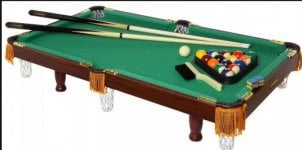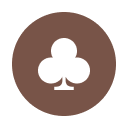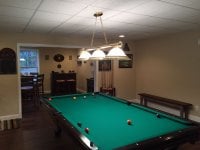You are using an out of date browser. It may not display this or other websites correctly.
You should upgrade or use an alternative browser.
You should upgrade or use an alternative browser.
BlackMamba
Rock Star
Silver Level
Russian Billiards has about forty varieties.How is Russian billiards played?
GENERAL RULE.
The strike on the cue ball.
The impact shall be carried out by the front of the cue in the direction of its longitudinal axis, with at least one leg of the player touching the floor. Performance of blow in any other way is fined.
The drawing of the initial shock.
The right to first strike in a meeting is determined by the result of the drawing. Located on different sides of the longitudinal line of the table, players simultaneously produce punches from the hands of the house, directing their whips to the rear Board. The winner is the player whose ball, having reflected from it, stops closer to the front.
The draw is considered to be automatically lost if the cue ball does not touch the rear Board, went to half of the opponent, fell into the pocket or jumped overboard. If the rules are violated by both players or both of the cue ball stopped at the same distance from the side, the draw is repeated.
The winner of the drawing has the right either himself to carry out an initial blow, or succumb to his opponent.
In subsequent batches complied with the order. Before the last decisive game the drawingis repeated anew.
Arrangement of balls.
Before the start of the game fifteen aimed balls with the help of a triangle are placed close to each other in the form of a pyramid with a top on the back mark and the base parallel to the short Board.
The initial impact.
When performing this shot is prohibited to make the case for a continuation of the outer side of the long side and also positioning the cue ball behind the line of the house.
The cue ball is considered to be entered into the game after hitting it with a cue. When playing with the hands of the balls, played in opposite corners, as well as fell as a result of this blow in other pockets, counted. The punch is made in other specified in these regulations: (a cue ball fell into a pocket or jumped overboard ("Russian pyramid", "Moscow"), the strike is allowed only on balls outside.
If all the aiming balls are located in the house, the blow is made from the opposite side of the table, which in this case serves as a temporary house, limited by the back line.
The played balls.
Balls are considered to be played (scored), if they fall into the pockets as a result of the correct blow.
Ball, reflected from the pockets on the playing surface of the table, remains in the game. The aimed ball, which fell into the pocket as a result of intentional rolling it on Board, is not counted and is set in accordance with the rules of a particular game, with no penalty imposed.
Jumped out balls.
The balls which have stopped after blow out of a game surface of a table (on Board, on a floor, etc.) are considered to have jumped out for a Board. The ball remains in the game if it hits on any stationary billiard accessory (upper part of the Board, bracket of the pocket, lighting device, etc.), independently returns again to the playing surface. If the ball hits outside the table any other object (cue, chalk, clothes, etc.), it is considered to have jumped out even if he then returns to the playing surface.
Popped sighting balls are exposed after the completion of the strike in accordance with the rules of each particular game. in this case, the penalty is not imposed, and correctly scored balls are counted.
If the Board is popping up the cue ball, then the player is penalized, and pocketed balls are not counted. When playing eight ball the cue ball is put on a common basis. When playing "Moscow" and "Russian pyramid", the opponent who enters the game strikes with a beat from the hand of the house.
Placing balls.
All incorrectly scored and jumped balls are spotted in accordance with the rules of that particular game.
All exposed balls are considered sighting.
The position of the ball.
It is determined by the position of the ball center. The ball, standing exactly on the line of the house, is considered to be located outside the house.
The beginning and completion of the strike.
The shot begins from the moment of contact of the sticker cue ball and ends after a full stop of all balls on the playing surface of the table. Rotating ball in place is considered to be moving.
Impact on the nearby
the aiming ball (no more than 1/2 the radius of the ball), as well as races placed close to the cue ball must be performed on cutting at an angle of 45° or more away from the line of the centers or in such a way that the cue ball after impact stopped in place, rolled back or left aside without crossing the penalty area line. For the performance of a wrong hit, the player is penalized.
Entry into game of the rival
The opponent enters the game after the previous blow was not played any ball or there was a violation of the rules.
Fines.
Fines are imposed in the following cases:
if the cue ball did not touch any of the aiming balls on impact;
if after strike the cue ball jumped out for Board;
if another hit is made before the end of the previous hit;
if you are performing hitting the cue ball none of the player's feet not touching the floor;
when you touch any ball on the playing surface of the table before, during or after a cue, machine, hand, clothing, etc.;
for the performance of a wrong strike the cue ball;
if you improperly blow beskostaya object ball;
for the kick by push the object ball distant from the cue ball more than 1/2 of the radius of the ball when the player overly delays the time of contact of the sticker cue ball and pushes at the same time the cue ball and object ball are playing;
if you double hit when the cue tip touches the cue ball twice;
for the implementation of the blow pressure, when the cue ball to the object ball squeezes from the side;
if at blow from a hand from the house the cue ball touches any aiming sphere which is in the house;
when you take a shot not cue ball ("Russian pyramid" "Moscow»);
when you drop the cue ball into a pocket ("Russian pyramid»);
in case of incorrect wagering ("American»);
if the blow from the hand of the house player, despite the warning of the judge, makes the cue ball behind the line of the house, makes a case for the continuation of the external side of the long side or produce a blow from the opposite side of the table;
when intervening in their play.
If several violations of the rules are committed in the performance of one strike, the penalty will be charged in a single amount.
Balls scored with violations of the rules do not apply and are set in accordance with the rules of that particular game.
Hanging balls.
If the ball, hanging over the pocket in the position of unstable equilibrium, remains motionless for five seconds or more after the completion of the blow, and then falls into the pocket, the judge restores it to its former place and the game continues. So do and in that case, if a hovering ball falls into a pocket after an explicit push or shake the billiard table.
If the hanging ball falls into the pocket before the end of five seconds after the completion of the blow, it is considered to have fallen into the pocket due to the impact and the game continues on a common basis.
If the player produces the shot Packed in the frozen object ball, and the last before it hits its target falls into a pocket, the judge reverts to the original position and the blow is repeated, the penalty to be imposed.
"Deaf" position.
If the balls are grouped near one of the pockets and the pocket was blocked, as well as in other cases, when after a long series of wagers position on the table does not change fundamentally, which leads to undue delay of the game, the judge, after warning players, has the right to place the remaining on the table aimed balls in the form of a pyramid (shortened pyramid) with the top on the back mark, the right of the subsequent blow is determined by the drawing and the game continues with the hands of the house.
The intervention of an outsider.
If during the game the balls are set in motion as the result of the interference of any outside person (directly or through any impact on the player taking the kick), the referee restores the original position and the blow is repeated, the fine is not expected. So do and in the event of any extraordinary circumstances: the wind, the fall of the lighting unit, accident, etc.
If an outsider interferes with the game intentionally, the game is suspended until he leaves the venue of the competition.
The intervention of a rival.
If the opponent touches, moves or stops a ball, he is fined, the position is restored by the referee and the game continues. If the opponent delays the ball played, moving in the direction of the pocket, the ball is played, and the player produces a subsequent blow.
Interference is also considered to be any actions of the opponent, aimed at diverting the attention of the player and to interfere with him in the performance of the strike.
If the opponent interferes with the game intentionally, the judge acts according to the section "Unsportsmanlike behavior".
Intentional delay of the game.
If the player, in the opinion of the judge, intentionally delays the game, the judge after the warning has the right to introduce a one-minute temporary restriction on the preparation and execution of the strike.
BlackMamba
Rock Star
Silver Level
A lovely table and a delightful playroom.
Debi
Forum Admin
Administrator
A lovely table and a delightful playroom.
Thanks and thanks for the explanation of Russian billiards - I didn't understand all of it but it sounds similar to 8-ball.
BlackMamba
Rock Star
Silver Level
The difference between Russian and American Billiards.Thanks and thanks for the explanation of Russian billiards - I didn't understand all of it but it sounds similar to 8-ball.
The game of Billiards is very similar in the first and in the second case. The presence of the table, balls and cue a prerequisite for the two subspecies of the game. But, Russian Billiards-a collective expression for a variety of games, roughly generalizing the term. Russian Billiards has larger balls than the American pool, all of the same color. The table in the Russian version more, pocket less. The difference even exists even in cue, in Russian Billiards it is much larger,heavier and longer. Pocket different the pointed form.
American pool differs in that it is the only variety and is an independent name of the game with a stable and well-formed set of rules. Balls for the game differ in different colors, they are much smaller and lighter than in Russian Billiards. The gate of pockets on the form have a rounded shape.
They're completely different. But, the only positive quality uniting the game can be considered a great mood and a sufficiently high level of excitement.
Debi
Forum Admin
Administrator
That looks hard!











